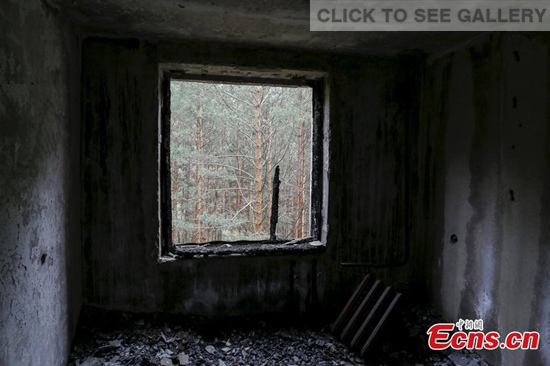Three decades have passed since the tragedy occurred at the Chernobyl nuclear power plant in the Soviet Union. A more recent accident, which took place a little more than five years ago at Japan's Fukushima Daiichi nuclear plant, showed again that lessons from those catastrophes should be properly digested to avoid similar disasters across the world.
The similarity between the Chernobyl accident and the Fukushima disaster is striking.
In both cases a regime of secrecy was applied. The Soviet authorities tried to hide the scale of the accident at first, while the Japanese attempted to diminish its importance.
Having received information about the true danger too late, local authorities therefore failed in some cases to evacuate people from areas with high pollution levels.
Therefore, the first lesson is the need to provide complete information to the public as soon as possible to avoid confusion.
There were contradictions in the estimates of the exposure level of radioactive iodine in tap water used by pregnant women and children and released almost simultaneously after the Fukushima disaster by the Japanese authorities, Professor Valery Stepanenko, a leading specialist in medical and environmental dosimetry and radiation safety, told Xinhua.
"There have been many reports about the necessity to develop international standards in providing timely information during such accidents, but there has been no progress so far, probably, due to the complexity of elaboration of such standards," said Stepanenko.
The second lesson is the need for rapid fixation of radiation doses, particularly of internal exposure, as radioactive iodine might pose a threat to the thyroid gland.
"In the early period after the Fukushima accident, a very limited number of practical estimates of radiation levels in the population have been made," the expert said. "Subsequently, Japan has started carrying out very detailed screening examinations of people who were children and adolescents at the time of the accident, but doses of internal exposure are left out."
Stepanenko had pursued information as to why Japan had not performed a retrospective analysis of the radiation doses received by the population but came up empty handed.
"As a result, doses received by children at that time remain unknown, but they are very important for proper follow-up treatment," he said.
The third lesson is to ban the building of nuclear power plants in areas of high seismic activity and close those that have already been built in such zones.
A number of Japanese nuclear power plants have been built on the coast, where one can at any moment expect an earthquake and tsunami, or a combination thereof.
A six-meter wall aimed to protect Fukushima against tsunamis failed to protect the station, as the waves reached a height of 12-13 meters, Stepanenko said.
"After Fukushima, the world suddenly realized that Japan lived on a nuclear volcano, and Japan started reviving its nuclear power network, taking into account the new, post-Fukushima safety requirements," he said.
The fourth lesson is that a nuclear accident in one country may impact another country.
Although a radioactive cloud hovered over a substantial part of Europe after the Chernobyl accident, Japan's neighbors were comparatively lucky. The wind blew radiation into the Pacific Ocean after the Fukushima accident, but elevated levels of radiation were registered on the U.S. coast.
No one can guarantee that a future disaster would not have deadly consequences for Korea, China and Russia, Stepanenko said.
"Who knows how the wind would blow when a new, strong tsunami hits the region."



















































